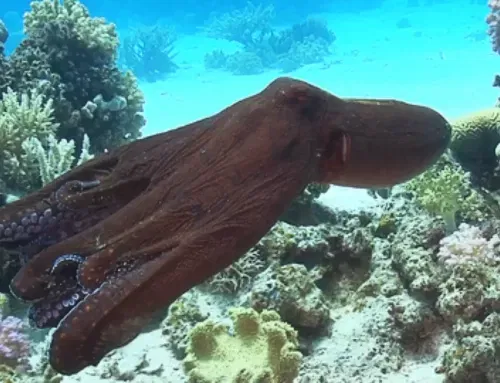
Bob Goldstein captured the C. elegans in action. Learn more about this worm.
Do you think that an animal without eyes would be completely blind? I used to believe that. It seems that is a limited view if you define vision as “seeing” light that affects behavior. Okay, you might say that a growing tree bends towards the light, allowing the leaves to photosynthesize nutrients, and that’s a type of “seeing”. But that’s a tree. What about animals?
Certainly, a roundworm, which doesn’t have anything that looks like an eye, must be blind. A short note in the Science Section of the New York Times Section on Tuesday (March , 9) suggests some animals don’t need eyes to see.
Roundworms eat microbes. However, it’s a dangerous world: some microbes produce toxins. One species of toxic bacteria (Pseudomonas aeruginosa) makes the roundworms move away as fast as possible. Why?
The simplest intuitive explanation is that the roundworm detects the toxin in the environment through some chemical sensing mechanism, but that doesn’t seem to be the right answer. When roundworms are placed on patches of the noxious bacteria, they move away. But, imagine this, only when the lights are on. In the dark they don’t scurry away. It turns out that in the light, the mats of the bacteria are bright blue. Not so in the dark. Dr. Dipon Ghosh at Yale believes that the worms “see” the blue and somehow have assembled some kind of warning system with color vision, despite the absence of eyes.
So, just like you shouldn’t believe everything you see, it would be prudent to not disbelieve something if you don’t see it with your eyes.
Still curious? Check out these articles:






Leave A Comment